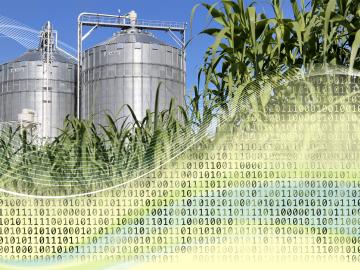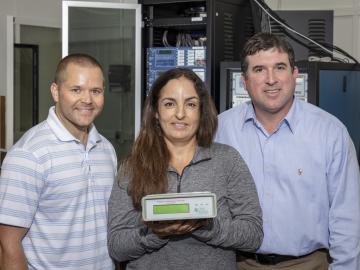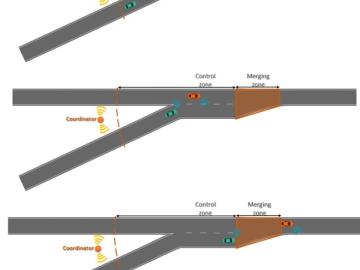
Filter News
Area of Research
- Biology and Environment (38)
- Biology and Soft Matter (1)
- Computational Biology (1)
- Electricity and Smart Grid (1)
- Energy Science (34)
- Functional Materials for Energy (1)
- Fusion and Fission (2)
- Isotopes (1)
- Materials (18)
- Materials for Computing (2)
- National Security (13)
- Neutron Science (7)
- Nuclear Science and Technology (1)
- Supercomputing (17)
News Topics
- (-) Bioenergy (21)
- (-) Biomedical (11)
- (-) Cybersecurity (10)
- (-) Environment (39)
- (-) Grid (16)
- (-) Quantum Science (12)
- (-) Transportation (17)
- 3-D Printing/Advanced Manufacturing (17)
- Advanced Reactors (5)
- Artificial Intelligence (15)
- Big Data (10)
- Biology (29)
- Biotechnology (3)
- Buildings (16)
- Chemical Sciences (15)
- Clean Water (6)
- Composites (6)
- Computer Science (34)
- Coronavirus (9)
- Critical Materials (5)
- Element Discovery (1)
- Energy Storage (27)
- Exascale Computing (8)
- Fossil Energy (1)
- Frontier (10)
- Fusion (11)
- High-Performance Computing (16)
- Hydropower (8)
- Irradiation (1)
- Isotopes (10)
- ITER (2)
- Machine Learning (10)
- Materials (37)
- Materials Science (26)
- Mercury (2)
- Microscopy (18)
- Molten Salt (4)
- Nanotechnology (18)
- National Security (17)
- Neutron Science (22)
- Nuclear Energy (20)
- Partnerships (8)
- Physics (19)
- Polymers (10)
- Quantum Computing (7)
- Security (11)
- Simulation (6)
- Space Exploration (6)
- Summit (9)
Media Contacts

Energy and sustainability experts from ORNL, industry, universities and the federal government recently identified key focus areas to meet the challenge of successfully decarbonizing the agriculture sector

A research team from Oak Ridge National Laboratory has identified and improved the usability of data that can help accelerate innovation for the growing bioeconomy.

To learn more about interactions between drug molecules and micelles, Associate Professor Megan Robertson and graduate students Tyler Cooksey and Tzu-Han Li from the University of Houston (UH) are using neutrons at the Department of Energy’s (DOE’s) Oak Ridge National Laboratory (ORNL).

Scientists at the Department of Energy’s Oak Ridge National Laboratory have created a recipe for a renewable 3D printing feedstock that could spur a profitable new use for an intractable biorefinery byproduct: lignin.
![2018-P07635 BL-6 user - Univ of Guelph-6004R_sm[2].jpg 2018-P07635 BL-6 user - Univ of Guelph-6004R_sm[2].jpg](/sites/default/files/styles/list_page_thumbnail/public/2018-P07635%20BL-6%20user%20-%20Univ%20of%20Guelph-6004R_sm%5B2%5D.jpg?itok=hUSyvkP0)
A team of scientists, led by University of Guelph professor John Dutcher, are using neutrons at ORNL’s Spallation Neutron Source to unlock the secrets of natural nanoparticles that could be used to improve medicines.

Thought leaders from across the maritime community came together at Oak Ridge National Laboratory to explore the emerging new energy landscape for the maritime transportation system during the Ninth Annual Maritime Risk Symposium.

Carbon fiber composites—lightweight and strong—are great structural materials for automobiles, aircraft and other transportation vehicles. They consist of a polymer matrix, such as epoxy, into which reinforcing carbon fibers have been embedded. Because of differences in the mecha...

As Puerto Rico works to restore and modernize its power grid after last year’s devastating hurricane season, researchers at Oak Ridge National Laboratory have stepped up to provide unique analysis, sensing and modeling tools to better inform decisions.

Self-driving cars promise to keep traffic moving smoothly and reduce fuel usage, but proving those advantages has been a challenge with so few connected and automated vehicles, or CAVs, currently on the road.

Oak Ridge National Laboratory scientists have devised a method to control the heating and cooling systems of a large network of buildings for power grid stability—all while ensuring the comfort of occupants.


